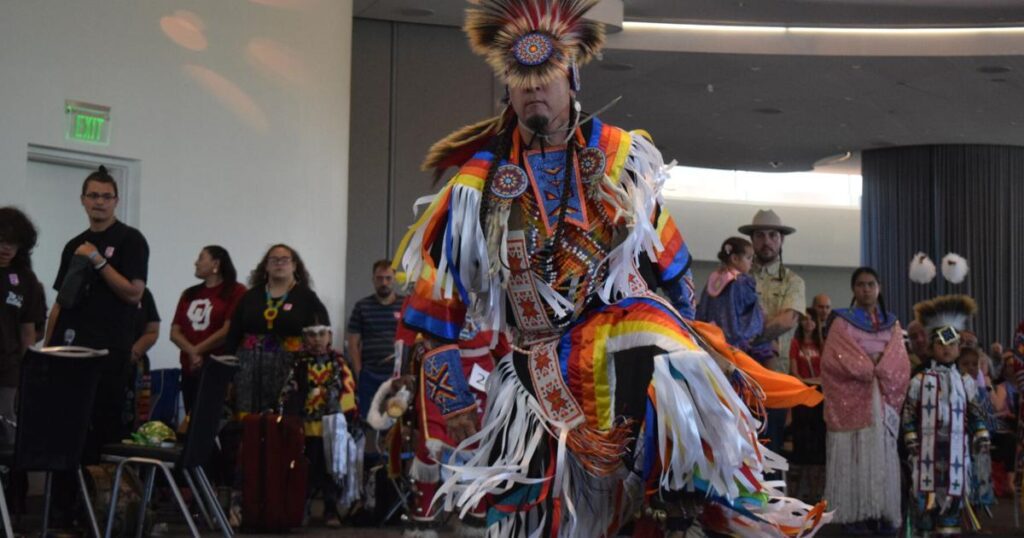The halls of the Denver Art Museum shook with the sound of Native American drums and chants Saturday afternoon, with the sound of the footsteps of traditional dancers following close behind.
The museum held its 35th Annual Friendship Powwow Saturday. The day of cultural celebration included dance competitions, art and jewelry vendors, traditional food and crafts — all showcasing Natives from the Denver region.
“It’s a great way to highlight the Native community that is thriving here in the city,” Erlidawn Roy, the powwow coordinator for the Denver Art Museum, said. “We’re a diverse community. We have doctors, lawyers, teachers. But this is a place where we can go back and honor our tradition and our ceremony ways and share it with Denver.”
Hundreds of people, both Native and non-Native, crowded the museum to watch a collection of dancers and drummers from Colorado, Oklahoma, South Dakota and New Mexico compete in contests and celebrate their heritage.
“We travel through the Indian country to do powwows all summer long,” Anthony Peters, a Denver native and member of the Oglala Lakota Tribe, said. “It’s good for the youth, good for the elders. We dance for our elders. We dance for our missing women, our missing family members. We dance for prayers. We showcase this to show we’re still here in America. We’re still keeping our traditions alive and passing them down generation to generation.”
Peters was celebrated as Head Man of the powwow. The Head Man and Woman are chosen for their leadership and support they provide for the community.
And outside, local Native artists lined the street with tents, showcasing traditional and modern artwork from the culture.
Marjorie Lidalda, for example, was an 80-year-old woman selling traditional handmade clothing, dream catchers, baby booties and other items.
Lidalda was originally from New Mexico and part of the Dene and Taos Pueblo tribes. Her family moved to Colorado during World War II.
Though Lidalda was handcrafting items her whole life, she moved to full-time after an on-the-job injury. She began selling at powwows in 1990.
“It’s nice to have recognition of handmade items,” Lidalda said of seeing crowds at these events. “A lot of this stuff I’ve tried to teach people how to do, but it’s so hard to find youngsters that want to learn anymore.”
She added that she believes that classic Native artistry, like the handmade items, is being lost because the younger generation doesn’t want to put in the time.
“They don’t have the patience. I notice it even with my children, they want it to be instant,” Lidalda said, noting that some items take her a week to create. “But, coming out and showing these things off may help inspire them.”
But the youngsters certainly like to dance, with the Tiny Tots competition showing off children dancers from the state.
“This is where you build your powwow family,” Roy said, noting that she was a dancer as a young girl. “Yeah, you have your aunts and your uncles that come to your birthday party, but then you have your powwow family here … They’ve known me, they’ve known my family and my grandparents.”
The Friendship Powwow was the first event created by the museum after the Scientific and Cultural Facilities District tax was created in 1989, helping fund nonprofit arts and culture organizations across the county.
For 35 years, the museum has shown the culture to the city — but there’s more to the powwow than just a day of celebration.
“All powwows are public, but this space feels a little more special because we have items in collections that belong to our tribal people,” Roy said, pointing toward the museum’s Indigenous Arts of North America exhibit.
“We are dancing and they’re hearing those songs, as well,” she said of her ancestors. “The Denver Art Museum has one of the largest Native collections here and in the storage area underground, so we know that our drums will carry and they’ll hear them, too.”

